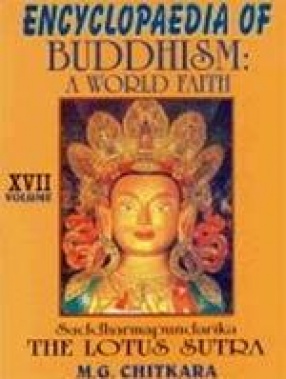The Lotus Sutra gives the clearest possible picture of Buddhism saying that it is a philosophy of life. More specifically, Buddhism teaches one how to purify his life, develop the wisdom to grasp life’s truth and establish true independence. The development of Mahayana came a tremendous outpouring of literary works, which included some of the best known and most widely used of all the Buddhist texts. There was the group of Prajnaparamita-sutras, including the Diamond and heart Sutras, the Lotus Sutra (Saddharma-pundarika-sutra). The Dasabhumika-sutra, the Sikhavativyuha-sutra, and many others. Therefore, as with much of Indian history, we know little of the details of dates and events, but we have a great deal of information about the development of thought. Through the sutras and texts, we can trace a movement that put forth new conceptions about such doctrines as the Bodhisattva, Sunyata (emptiness), Karuna (Compassion), and the six paramitas (perfections). This truth is the Law existing in and behind the phenomenal changes in the universe and pervading the boundless expanses of space. This is also the fundamental law that operates within the depths of each individual life. Life has an infinite variety of manifestations and functions, put the entity or Law of life permeates all phenomena. Buddhist scriptures other than the Lotus Sutra are only partial and relative explanations of the fundamental Law of life. The sutras other than the Lotus Sutra regarded the Ten Worlds as separate and independent of each other, not as interrelated parts of a whole entity. There was no systematic explanation of the Ten Worlds. In contrast, through the Lotus Sutra we can see that each of the ten states. moreover, one universal rule regulates their changing aspects. This rule, the ten factors of life, is applicable to all the Ten Worlds at any moment and is common to each entity of life. Life manifests itself in different ways and thus reveals its distinctive character. Because each form of life has its own unique qualities, the two concepts of the Ten Worlds and the ten factors alone are not sufficient to perceive life in its entirety. The three realms of existence, which are also expounded in the Lotus Sutra, are necessary for a full expression of life. They are the realm of the five components, the realm of living beings and the realm of the environment. In the natural environment. In the natural environment, such as air, land, the sea, rivers and the sun’s rays, living beings of a particular species assist each other and cooperate with other forms of life in the struggle to survive. As they grow, living beings influence and incorporate their surroundings both spiritually and physically. They take on distinctions in accord with the peculiarities of their environment. The theory of the three realm was expounded to analyze and understand the individualization in life.
Encyclopaedia of Buddhism: A World Faith (Volume XVII)
In stock
Free & Quick Delivery Worldwide
reviews
Bibliographic information
Title
Encyclopaedia of Buddhism: A World Faith (Volume XVII)
Author
Edition
1st ed.
Publisher
ISBN
8176481963
Length
xx+584p., Reference; Glossary; Appendices; Bibliography; Index; 26cm.
Subjects








There are no reviews yet.